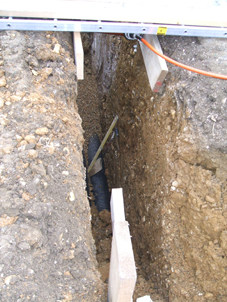Trench collapses can be one of the most horrifying incidents on a construction site. The UK’s Health & Safety Executive has released photos of the trench in which a worker, Mark Miller according to one media report
“…suffered a broken leg and bruising, and was incredibly fortunate to survive the horror of being buried alive.”


The same media report from Cambridge News says
“The court heard Mr Miller was saved by Hill [the contractor and Miller’s employer],…. after he rushed to free the trapped worker.
Robin Cooper, prosecuting, said: “He was buried up to his abdomen and felt his left leg break. More earth then collapsed on him and buried him to above his head.”
Continue reading “Man survives trench collapse, employer fined £3,500”

